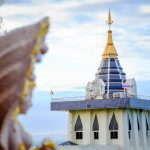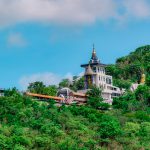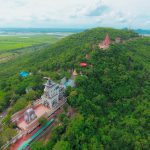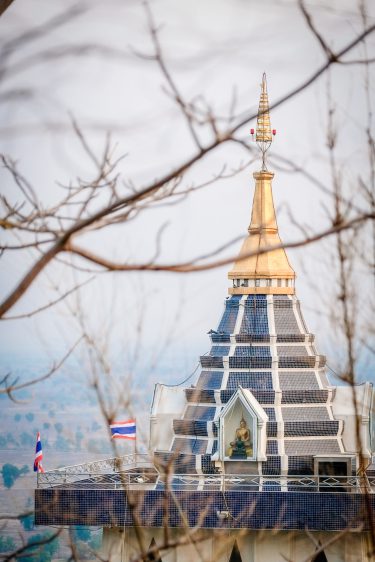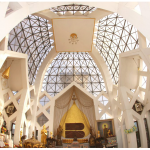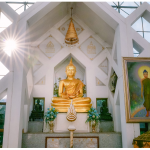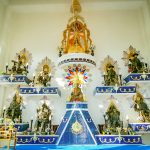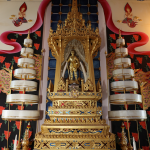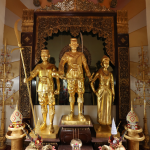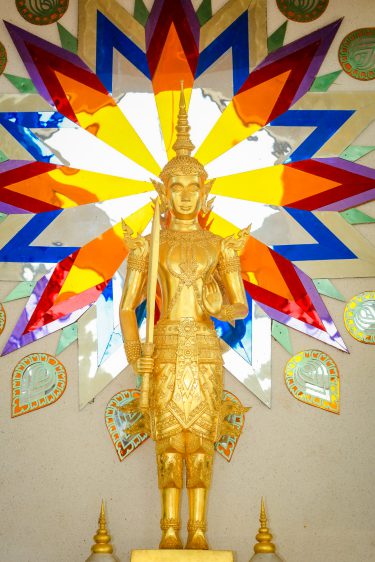Zone 1
Rachayanawa Vessel and Sri Maharaj Pagoda
Located near the shuttle pick up area, this zone features 4 notable attractions:
Rachayanawa Vessel
Rachayanawa Vessel
Currents of desire--which lead to suffering--can only drown those without wisdom; however, Buddhists who are wise and determined, those who will not let their heart go with the flow of desire, and those who have composure and diligence will reach the vessel and safely journey to the shore of ultimate freedom.
Currents of desire--which lead to suffering--can only drown those without wisdom; however, Buddhists who are wise and determined, those who will not let their heart go with the flow of desire, and those who have composure and diligence will reach the vessel and safely journey to the shore of ultimate freedom.
Crystal Ubosot and Makutpunttana Chedi
Crystal Ubosot and Makutpunttana Chedi
Now the ubosot also represents a symbolic site of the Buddha’s cremation: Makutpunttana Chedi. The original historical location where the Buddha was cremated was memorialized by King Ashoka the Great (304-232 BCE); he built a stupa to mark the spot. The multi-edge structure over the ubosot represents that stupa or Makutpunttana Chedi of Siri Wattana Wisut Forest Monastery of Her Royal Highness. Conceptualized in late 2019 and built in late 2020, the Chedi contains soil from the Buddha’s cremation site in India and all provinces of Thailand, which is symbolic. It suggests that Thailand is the land of Buddhism, one on which we shall not trample.
Inside the ubosot/Makutpunttana Chedi, there are three sacred notable objects: a double footprints of the Buddha with 108 auspicious symbols; a reclining Buddha in honor of the Supreme Patriarch, His Holiness Somdej Phra Ariyavongsagatanana IX; and Phra Buddha Ratchamongkol Ubolborphit (the Principal Buddha).
Now the ubosot also represents a symbolic site of the Buddha’s cremation: Makutpunttana Chedi. The original historical location where the Buddha was cremated was memorialized by King Ashoka the Great (304-232 BCE); he built a stupa to mark the spot. The multi-edge structure over the ubosot represents that stupa or Makutpunttana Chedi of Siri Wattana Wisut Forest Monastery of Her Royal Highness. Conceptualized in late 2019 and built in late 2020, the Chedi contains soil from the Buddha’s cremation site in India and all provinces of Thailand, which is symbolic. It suggests that Thailand is the land of Buddhism, one on which we shall not trample.
Inside the ubosot/Makutpunttana Chedi, there are three sacred notable objects: a double footprints of the Buddha with 108 auspicious symbols; a reclining Buddha in honor of the Supreme Patriarch, His Holiness Somdej Phra Ariyavongsagatanana IX; and Phra Buddha Ratchamongkol Ubolborphit (the Principal Buddha).
Sri Maharaj Pagoda
Sri Maharaj Pagoda is the first pagoda to be constructed at the Forest Monastery of Her Royal Highness. It consists of seven floors; each level is dedicated to important royals or a monk in Thai history.
Sri Maharaj Pagoda
Sri Maharaj Pagoda is the first pagoda to be constructed at the Forest Monastery of Her Royal Highness. It consists of seven floors; each level is dedicated to important royals or a monk in Thai history.
First Floor
Maharaj Hall, a room containing all monarchs who have been honored as maharaj or the great in Thai history
Maharaj Hall, a room containing all monarchs who have been honored as maharaj or the great in Thai history
Second Floor
Queen Jama Thaywe, a warrior monarch of Hariphunchai Kingdom (629-1292)
Queen Jama Thaywe, a warrior monarch of Hariphunchai Kingdom (629-1292)
Third Floor
King Naresuan the Great (1555-1605), a warrior king of Ayutthaya, who reclaimed Thai independence from Burma in the sixteenth century
King Naresuan the Great (1555-1605), a warrior king of Ayutthaya, who reclaimed Thai independence from Burma in the sixteenth century
Fourth Floor
● Queen Suriyothai (1511-1548), a sixteenth-century warrior who lost her life in a battle against Burma during Ayutthaya Period (1351-1767)
● King Rama VI (1880-1925) and his poems, a scholar and literary genius
● Queen Suriyothai (1511-1548), a sixteenth-century warrior who lost her life in a battle against Burma during Ayutthaya Period (1351-1767)
● King Rama VI (1880-1925) and his poems, a scholar and literary genius
Fifth Floor
Most Venerable Somdej Phra Buddhajan Toh (1788-1872), a famous and much revered senior-ranking monk well known for his teachings and amulets
Most Venerable Somdej Phra Buddhajan Toh (1788-1872), a famous and much revered senior-ranking monk well known for his teachings and amulets
First Floor
Maharaj Hall, a room containing all monarchs who have been honored as maharaj or the great in Thai history
Maharaj Hall, a room containing all monarchs who have been honored as maharaj or the great in Thai history
Second Floor
Queen Jama Thaywe, a warrior monarch of Hariphunchai Kingdom (629-1292)
Queen Jama Thaywe, a warrior monarch of Hariphunchai Kingdom (629-1292)
Third Floor
King Naresuan the Great (1555-1605), a warrior king of Ayutthaya, who reclaimed Thai independence from Burma in the sixteenth century
King Naresuan the Great (1555-1605), a warrior king of Ayutthaya, who reclaimed Thai independence from Burma in the sixteenth century
Fourth Floor
● Queen Suriyothai (1511-1548), a sixteenth-century warrior who lost her life in a battle against Burma during Ayutthaya Period (1351-1767)
● King Rama VI (1880-1925) and his poems, a scholar and literary genius
● Queen Suriyothai (1511-1548), a sixteenth-century warrior who lost her life in a battle against Burma during Ayutthaya Period (1351-1767)
● King Rama VI (1880-1925) and his poems, a scholar and literary genius
Fifth Floor
Most Venerable Somdej Phra Buddhajan Toh (1788-1872), a famous and much revered senior-ranking monk well known for his teachings and amulets
Most Venerable Somdej Phra Buddhajan Toh (1788-1872), a famous and much revered senior-ranking monk well known for his teachings and amulets
Sixth Floor
Tipitaka Room
Tipitaka Room
Seventh Floor
The Pagoda’s Peak containing Buddha’s relic and four Buddhas; each one looks out to a cardinal direction: Luang Phor Roong, Phra Buddha Wimok, Phra Kring Ayuwatthana, and Phra Kring Siriwattako.
The Pagoda’s Peak containing Buddha’s relic and four Buddhas; each one looks out to a cardinal direction: Luang Phor Roong, Phra Buddha Wimok, Phra Kring Ayuwatthana, and Phra Kring Siriwattako.
Altogether, all of the attractions and artifacts of Sri Maharaj Pagoda aim to help visitors develop knowledge and appreciation of the country, religion and monarchy, the Three Pillars of the Thai nation.
